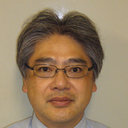[Changes in chewing rhythm during repetitive series of mastication in normal adults as a function of time elapsed and the four basic taste stimuli].
Keywords
Abstract
Surface EMG activities in the masseter muscle were recorded from 8 healthy men with normal permanent dentition during habitual chewing of a small cube of synthetic cellulose sponge which had absorbed distilled water. Three parameters of chewing rhythm, viz., cycle time, duration, and interval, were shown as the respective averages of 40 measurements of the EMG traces of a masticatory series of 42 consecutive chewing strokes. Twenty-five recording sessions, in each of which the above masticatory series were repeated 10 times in a day with a 5 minutes' recess between each series, were performed on a subject during continuous 25 days. The amount of scatter in the distribution of 25 cycle time values was great at the 1st masticatory series, gradually decreased to reach a node relatively free from the dispersion at the 5th series, and then gradually increased from the 6th to 10th series. The same phenomenon was observed in all 8 subjects, although there was a small difference among them in the number of the series where the node was apparent. The average of 5 cycle time values was used to compare in the same subject the effect of chewing the cellulose sponge which had absorbed one of the 4 basic taste solutions with the effect of chewing that which had absorbed distilled water. The average value while chewing the sponge which had absorbed 1 M saccharose was significantly lower in the subjects who obtained a relatively large average value during distilled water sponge-chewing, whereas it was significantly greater in those who obtained a relatively small average value while chewing the sponge which had absorbed distilled water. The other 3 taste stimuli induced a significant increase in the average value in most subjects.


